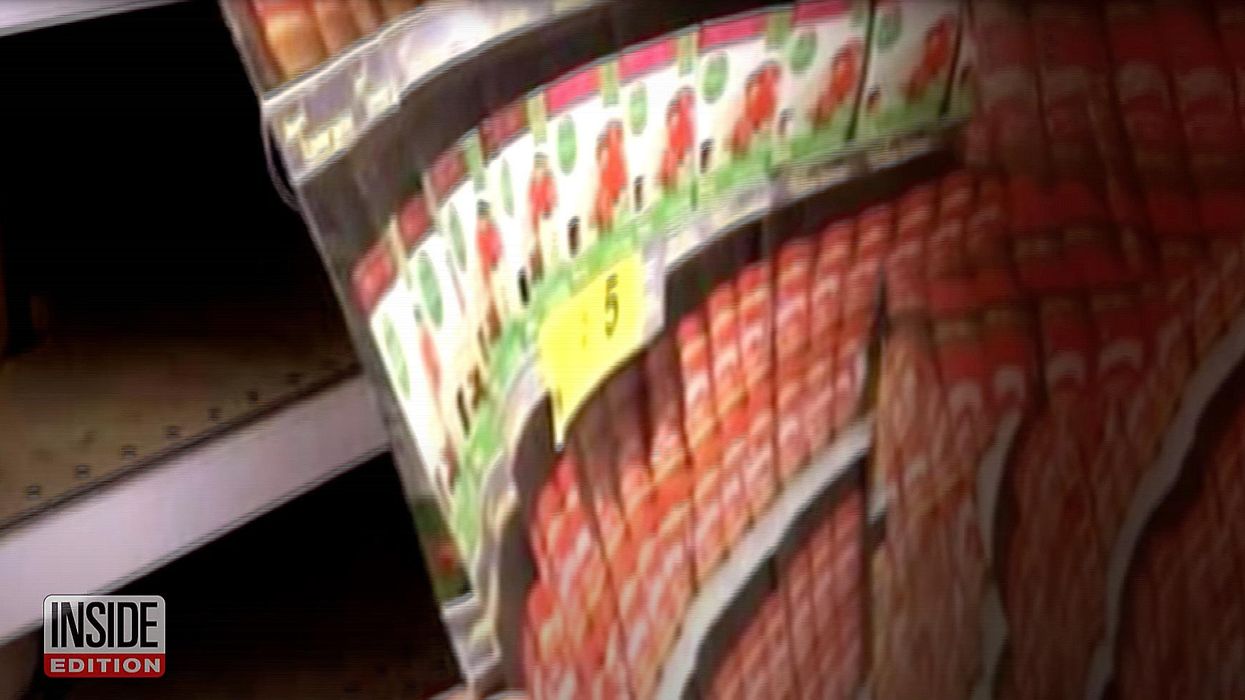
Image source: YouTube screenshot

America's grocery stores are reportedly using decoys and cardboard cutouts of food to persuade customers that the supply chain emergency isn't as grave as some think.
Some stores, according to a Tuesday report from "Inside Edition," are filling previously food-stuffed shelves with hordes of seasonal items in order to make up for the large gaps in product and even placing cardboard sheets of pictures of grocery items and price tags over bare shelves.
Retail analyst Phil Lempert told the outlet that he believes retailers are attempting to stem panic shopping and quell fears that may lead people to begin hoarding items as they did in the early days of the COVID-19 pandemic.
"What a supermarket is trying to do is hide the fact that there are shortages. They don't want to scare consumers at all," he explained. "They also want to prevent hoarding from take place the way it did in the beginning of COVID. ... We better get used to it. We're gonna see higher prices, we're gonna see more shortages, and frankly, we're going to see retailers try even harder to be able to mask the fact that their store is empty."
Reporter Jim Moret added, "It's a tactic many stores are using to fill empty shelves at a time when the nation is experiencing major shortages of pretty much everything due to the supply chain crisis."
Other examples of such practices include spreading out items of abundance in order to make up for empty space.
Inside Edition shared video of the apparent trickery on Tuesday, and at the time of this reporting, the video has been viewed more than 1.7 million times.
Fake Food Covers Empty Grocery Store Shelves to Hide Shortageswww.youtube.com
Earlier this month, the U.K.'s Guardian reported that similar incidents are taking place across the pond.
The report read, "Supermarkets are using cardboard cutouts of fruit, vegetables, and other groceries to fill gaps on shelves because supply problems combined with a shift towards smaller product ranges mean many stores are now too big."
One such store is popular U.K. chain Tesco, which has reportedly begun using cardboard and paper images of asparagus, carrots, grapes, and oranges in order to give the appearance of bountiful produce sections amid the supply chain crisis.
"Shoppers have spotted fake carrots in Fakenham, cardboard asparagus in London, pictures of oranges and grapes in Milton Keynes, and 2D washing liquid bottles in Cambridge," the outlet added. "Sainsbury's has also used outline drawings of packaging to fill shelves."
Retail analyst Bryan Roberts told the outlet that the practice has become commonplace over the last year.
"It is not only because of shortages, but because a lot of the larger stores are now simply too big," he said.
Roberts added that cutouts aren't the only tactic grocery retailers are using — some are also "filling meat fridges with bottles of tomato sauce or mayonnaise, spreading packs of beer out across whole aisles, and erecting large posters or other marketing material."